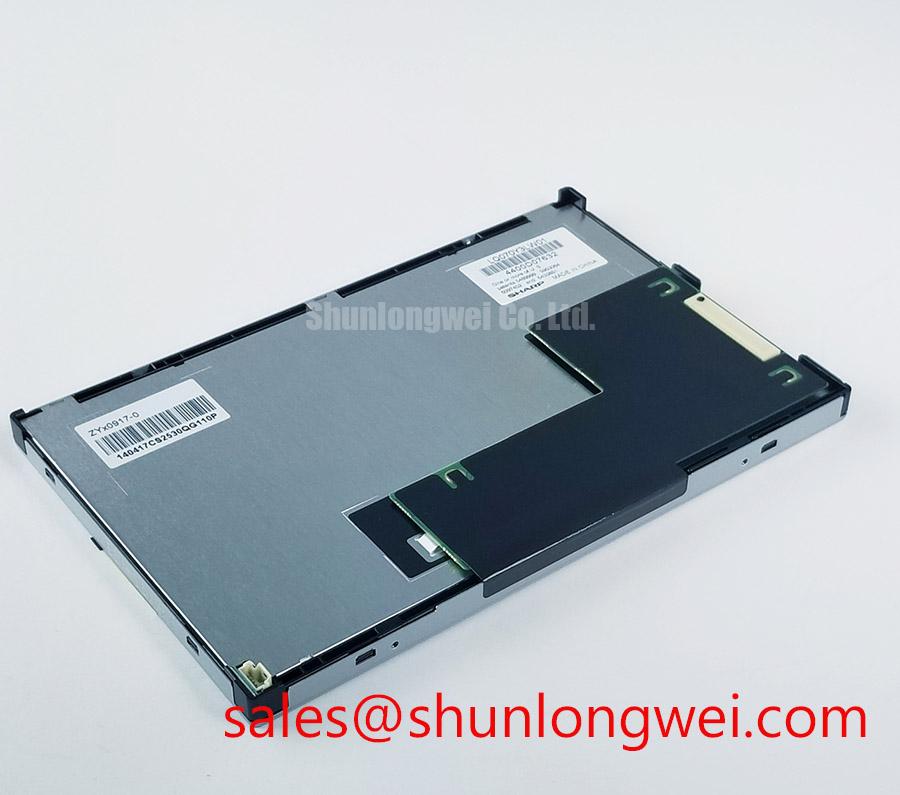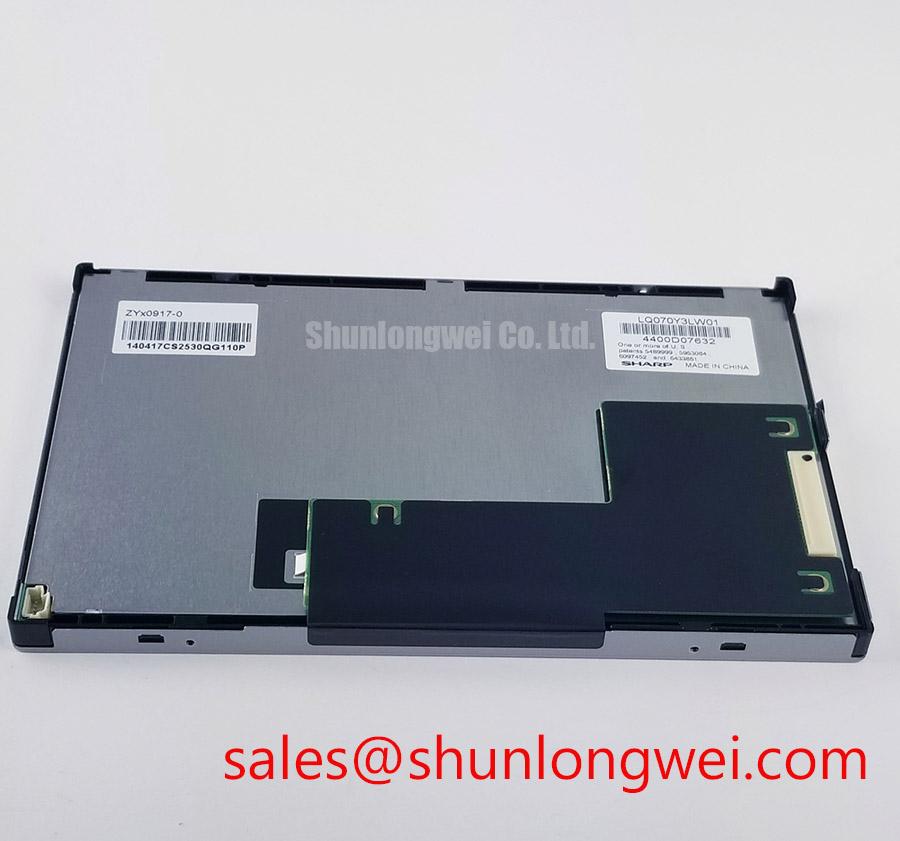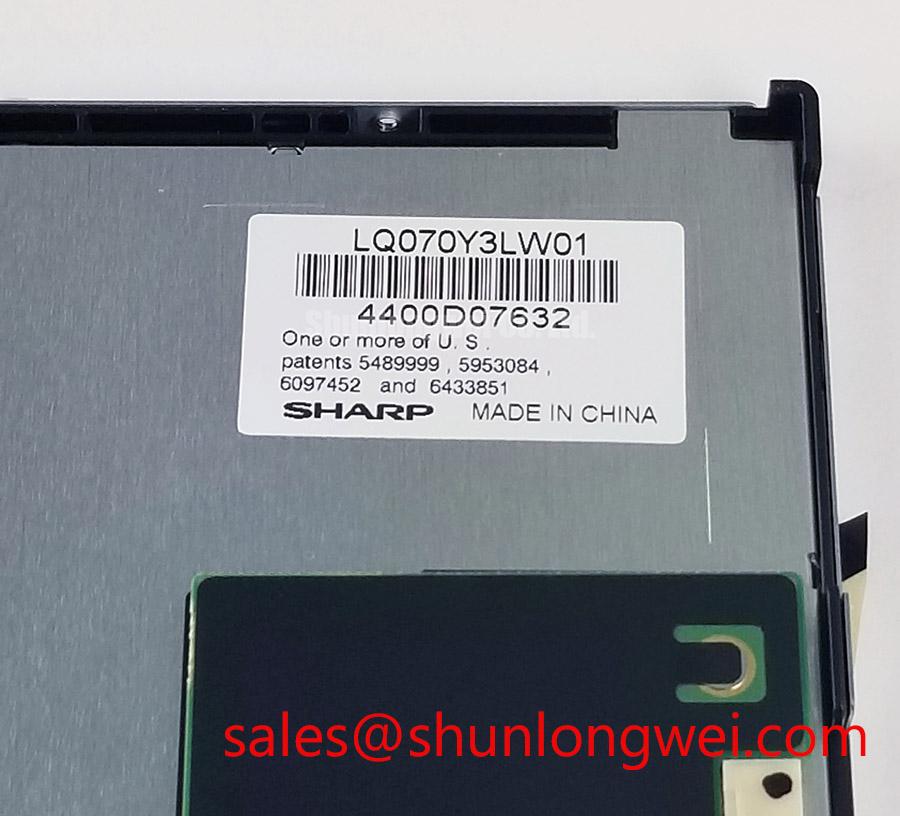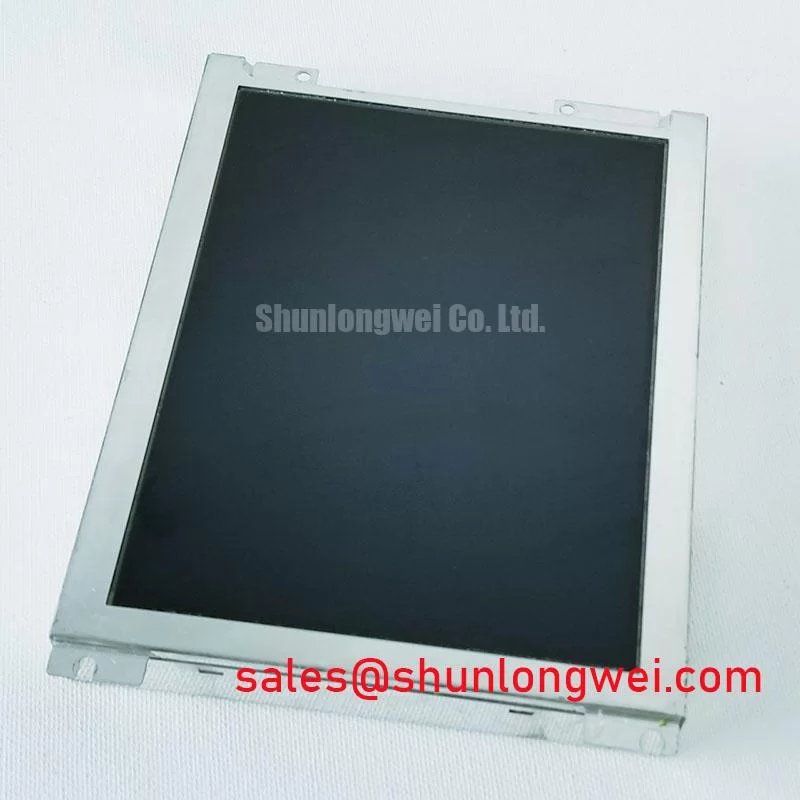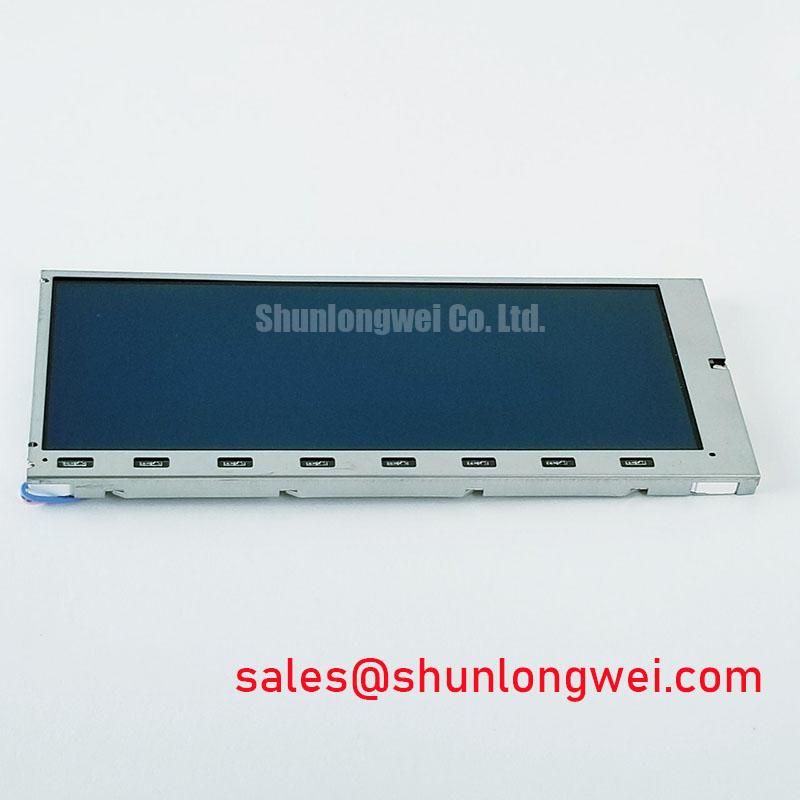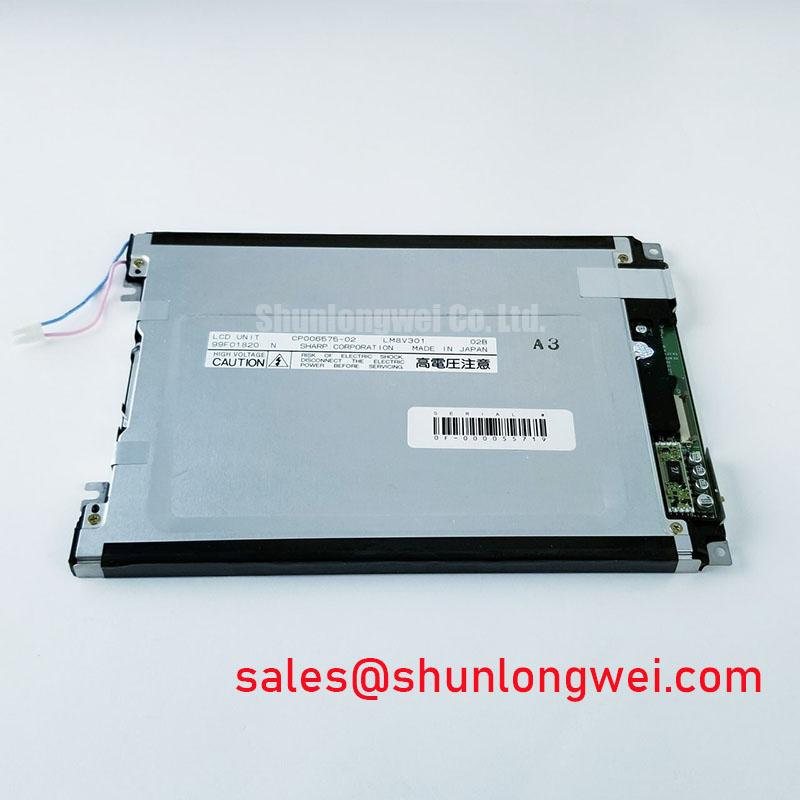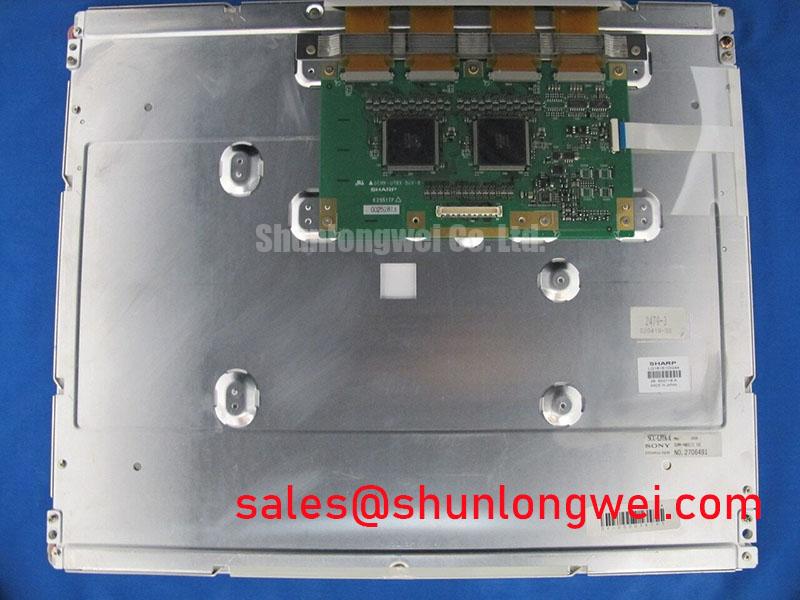Content last revised on November 15, 2025
Sharp LQ070Y3LW01: 7.0-inch WVGA Display for High-Clarity Industrial HMIs
Engineered for Visual Consistency and System Integration
The Sharp LQ070Y3LW01 is a 7.0-inch a-Si TFT-LCD module engineered for applications demanding consistent, high-quality visuals and straightforward system integration. It delivers a WVGA resolution of 800x480 pixels, a typical brightness of 360 cd/m², and utilizes ASV (Advanced Super View) technology to provide symmetrical, wide viewing angles. These features ensure reliable readability for operators in industrial control panels, medical monitoring devices, and portable instrumentation. With its standard LVDS interface and a focus on core performance metrics, this display provides a robust foundation for clear and effective human-machine interaction.
Key Parameter Overview
Decoding the Specs for Industrial HMI Readability
The technical specifications of the LQ070Y3LW01 are tailored for industrial environments where clarity and reliability are paramount. The combination of its resolution, brightness, and viewing angle technology forms the basis of its value in operator-facing applications. Each parameter is a piece of a larger puzzle; for instance, the contrast ratio is not just a number but a measure of how clearly a control interface can distinguish between "on" and "off" states, which is critical for reducing operator error.
| Specification | Value | Engineering Value & Interpretation |
|---|---|---|
| Screen Size | 7.0 inches | Provides a compact yet sufficient active area for displaying critical operational data and GUI elements without consuming excessive space in a control console or portable device. |
| Resolution | 800 (RGB) x 480 (WVGA) | Offers a pixel density of 133 PPI, suitable for rendering clear graphics, text, and numerical readouts in typical industrial HMI applications. |
| Display Technology | a-Si TFT-LCD, ASV, Normally Black | Advanced Super View (ASV) technology ensures wide, symmetrical viewing angles (85/85/85/85), meaning data is legible from multiple operator positions. The "Normally Black" feature provides deeper blacks, enhancing perceived contrast. |
| Brightness | 360 cd/m² (Typ.) | Delivers solid readability for indoor industrial environments. This level of brightness is comparable to a high-quality office monitor, ensuring visibility under typical factory or control room lighting. |
| Contrast Ratio | 800:1 (Typ.) | Ensures a clear distinction between light and dark content, which is crucial for the unambiguous display of status indicators, warnings, and detailed graphical elements. |
| Interface | LVDS (1 ch, 6/8-bit) | The Low Voltage Differential Signaling interface is a robust, widely adopted standard in industrial systems, known for its noise immunity and enabling simplified, reliable connections to the main controller board. |
| Operating Temperature | -10°C to +60°C | Specifies the range for reliable operation, making it suitable for deployment in climate-controlled factory floors, process control rooms, and embedded systems that are not exposed to extreme environmental fluctuations. |
Download the official datasheet for the LQ070Y3LW01 for detailed specifications and performance curves.
Application Scenarios & Value
System-Level Benefits in Control and Instrumentation
The Sharp LQ070Y3LW01 is best suited for applications where visual clarity from multiple perspectives and long-term operational stability are key design criteria. Its feature set provides direct value in several core areas:
- Industrial HMI Panels: The display's 800:1 contrast ratio and ASV technology ensure that machine operators can accurately read status information and interact with controls, whether standing directly in front of the unit or viewing it from an angle. This reduces the likelihood of misinterpretation in fast-paced production environments.
- Medical Monitoring Equipment: In patient monitoring or diagnostic devices, the wide and symmetrical viewing angles allow multiple healthcare professionals to view vital signs and data simultaneously and accurately from different positions around the equipment.
- Test and Measurement Instruments: For portable or benchtop analyzers, the 7.0-inch form factor provides an excellent balance between information density and physical size, while the LVDS interface simplifies the electrical integration into a compact system design.
- Point-of-Sale (POS) Systems: The antiglare surface treatment and robust construction make it a reliable choice for POS terminals, where it must withstand daily use while providing a clear view of transaction details for both the operator and the customer.
What is the primary benefit of ASV technology? It delivers consistent image quality and color fidelity across wide viewing angles, critical for multi-person or off-axis viewing scenarios. For systems requiring a different resolution or specific interface features, the AT080TN64 may offer alternative capabilities to consider during the design evaluation process.
Technical Deep Dive
A Closer Look at the ASV and LVDS Integration
Two key technologies define the integration value of the LQ070Y3LW01: its Advanced Super View (ASV) liquid crystal structure and its standard LVDS interface. ASV, a proprietary technology from Sharp, is a type of multi-domain Vertical Alignment (VA) technology. Imagine the liquid crystal molecules as tiny shutters. In standard displays, they might all tilt in one direction, causing color and contrast to shift when viewed off-center. With ASV, the molecules are aligned in multiple directions within each pixel. This is like having shutters that open in a more complex, radial pattern, ensuring that the light output is far more uniform across a wide cone of observation. For an engineering team, this means less constraint on the final product's enclosure design and greater flexibility in how the end-user can be positioned relative to the screen.
The use of a single-channel LVDS interface is a strategic choice for reliability in electrically noisy environments. LVDS works by sending two differential signals for each data line—one inverted relative to the other. The receiver subtracts one from the other, which effectively cancels out common-mode noise picked up along the cable. This is akin to using noise-canceling headphones for your data stream; the unwanted electrical "hum" from nearby motors, power supplies, or relays is filtered out, preserving signal integrity. This inherent noise immunity simplifies board layout, reduces the need for extensive shielding, and allows for longer cable runs between the display and the main processor, providing crucial design flexibility.
Frequently Asked Questions (FAQ)
What is the typical backlight lifetime for the LQ070Y3LW01?
The WLED backlight system is specified with a typical lifetime of 50,000 hours, making it a durable choice for applications that require long-term, continuous operation.
Is an external backlight driver required for this module?
Yes, the datasheet specifies that the module includes the WLED backlight unit but does not have a built-in driver. An external DC/DC converter or LED driver circuit is required to power the backlight.
What is the benefit of the "Normally Black" transmissive mode?
Normally Black mode, characteristic of ASV technology, means that pixels are black in their default, non-energized state. This results in deeper black levels and a higher perceived contrast ratio compared to Normally White technologies, which is particularly beneficial for displaying rich graphics and GUIs.
How does the antiglare surface treatment benefit industrial use?
The antiglare (AG) surface diffuses ambient light reflections from overhead lighting or windows. This is critical in an industrial setting, as it minimizes distracting glare and improves screen readability, reducing eye strain and potential for operator error.
What color depth does the LQ070Y3LW01 support?
The display supports 262K colors (6-bit) or up to 16.2 million colors (6-bit + FRC). Frame Rate Control (FRC) is a technique that cycles between different color shades to simulate intermediate tones, allowing it to display a wider color palette than its native 6-bit panel would otherwise allow.
Engineering Perspective
From an engineer's standpoint, the Sharp LQ070Y3LW01 represents a reliable, low-risk display solution for mainstream industrial and medical applications. Its value lies not in cutting-edge specifications but in its adherence to proven, robust technologies. The combination of ASV for consistent off-axis viewing and a standard LVDS interface for noise-immune connectivity addresses two of the most common challenges in HMI design. This allows development teams to focus on software and system-level features rather than mitigating display-related integration issues. The module provides a stable, predictable visual foundation, enabling the creation of effective and user-friendly interfaces for demanding professional environments.



